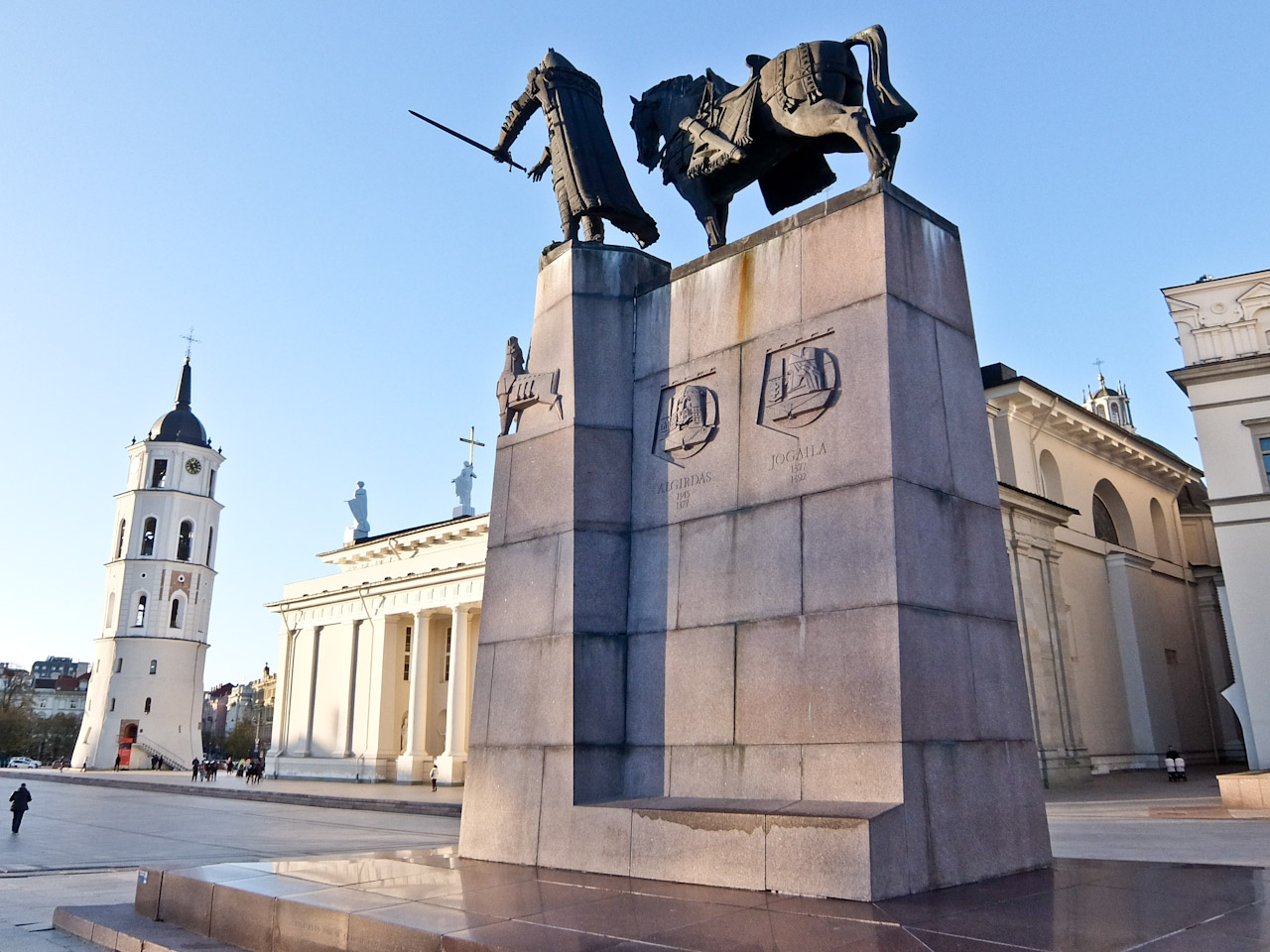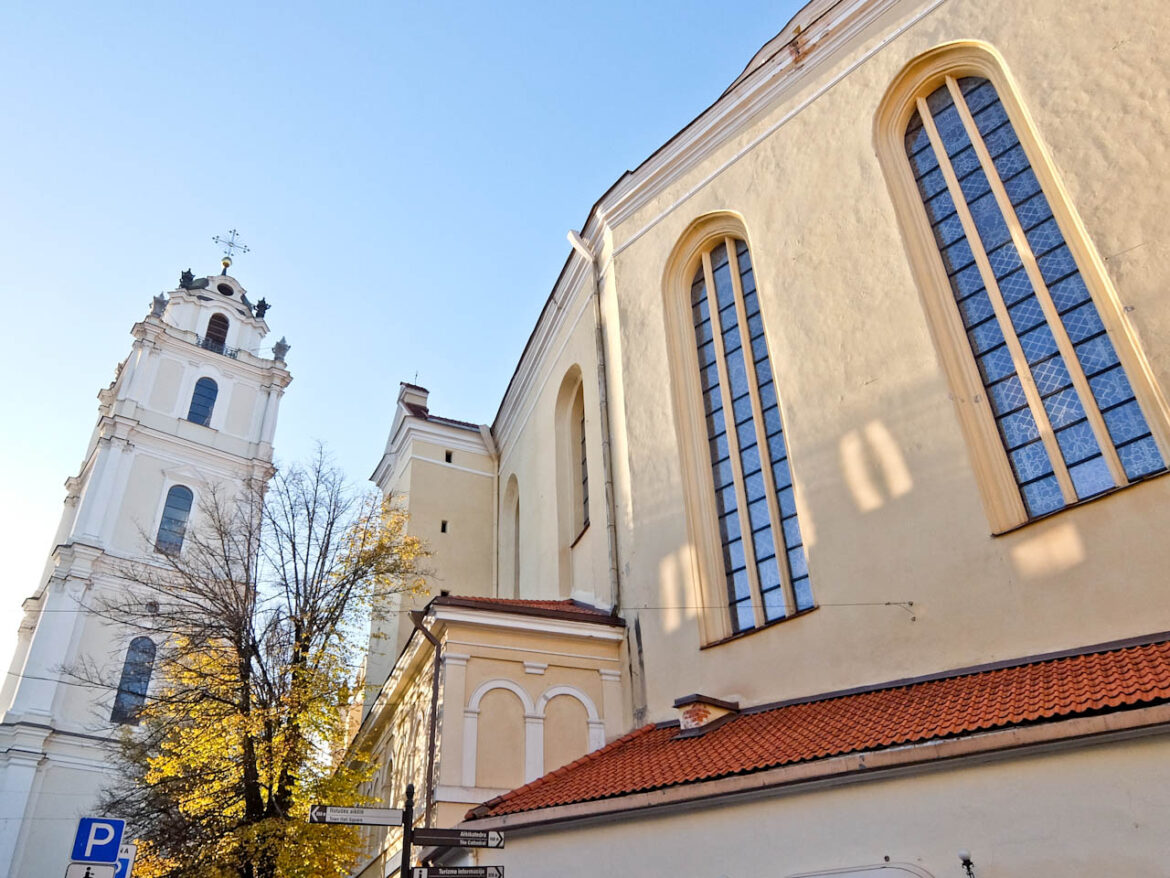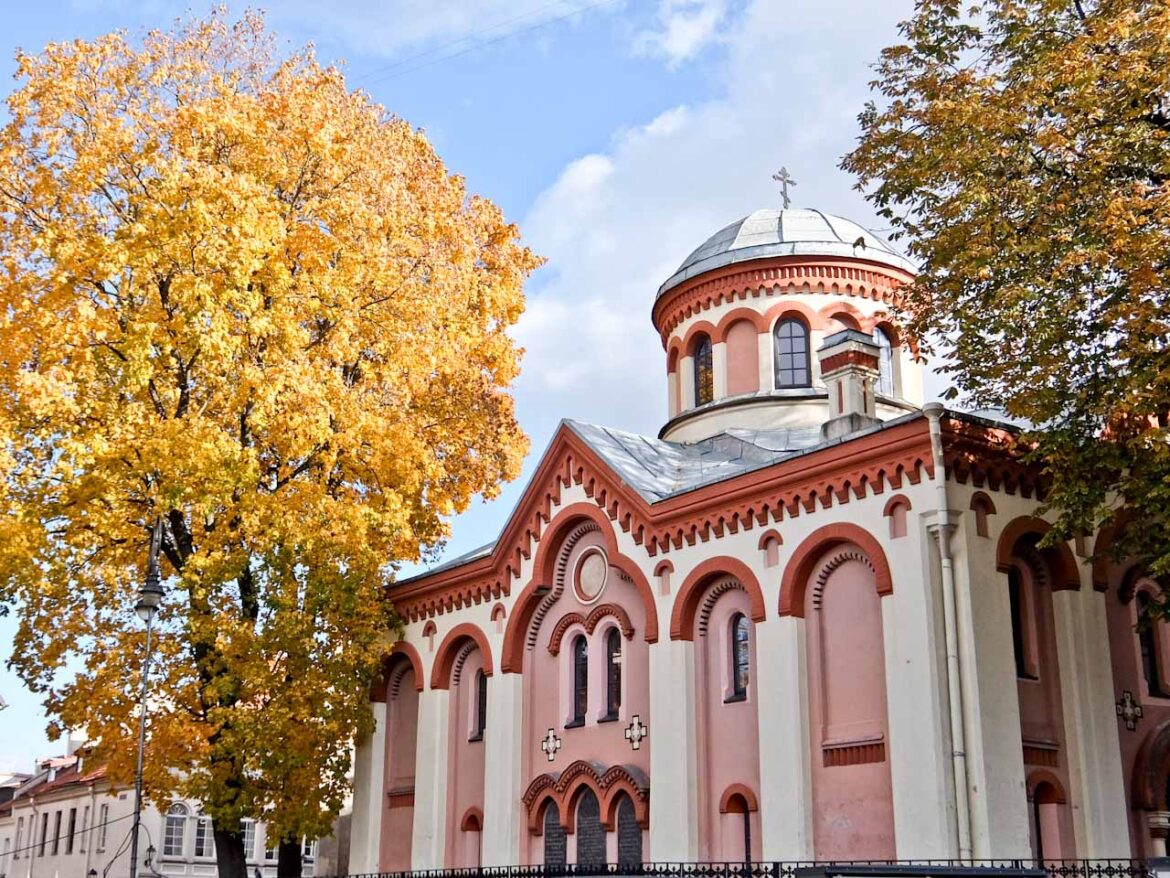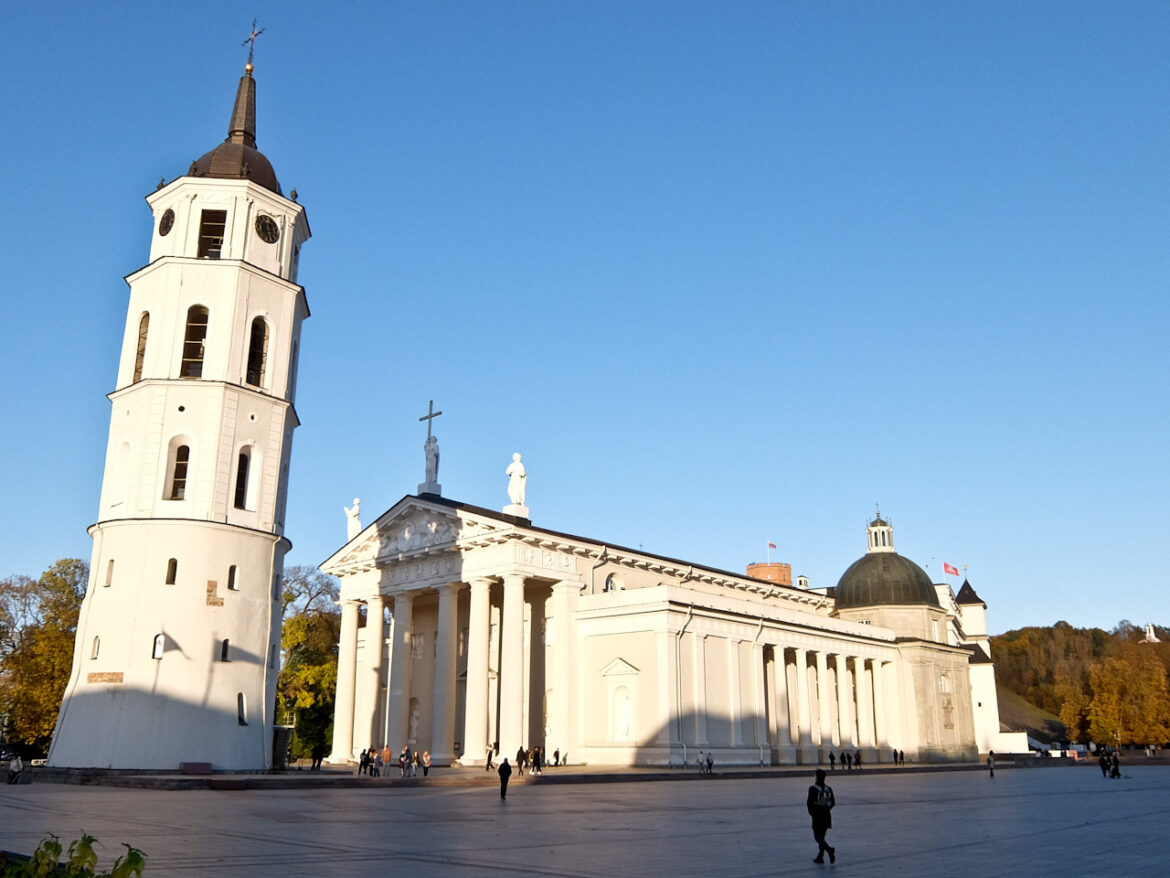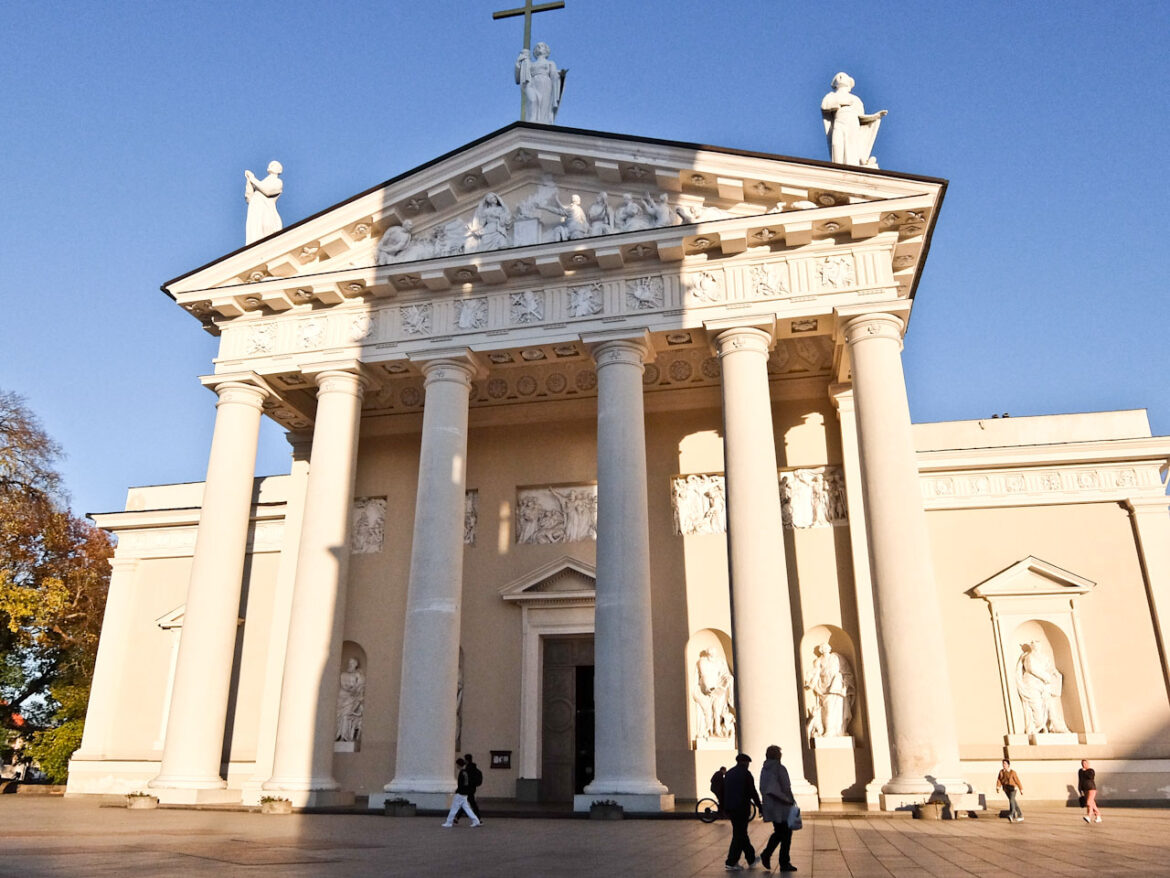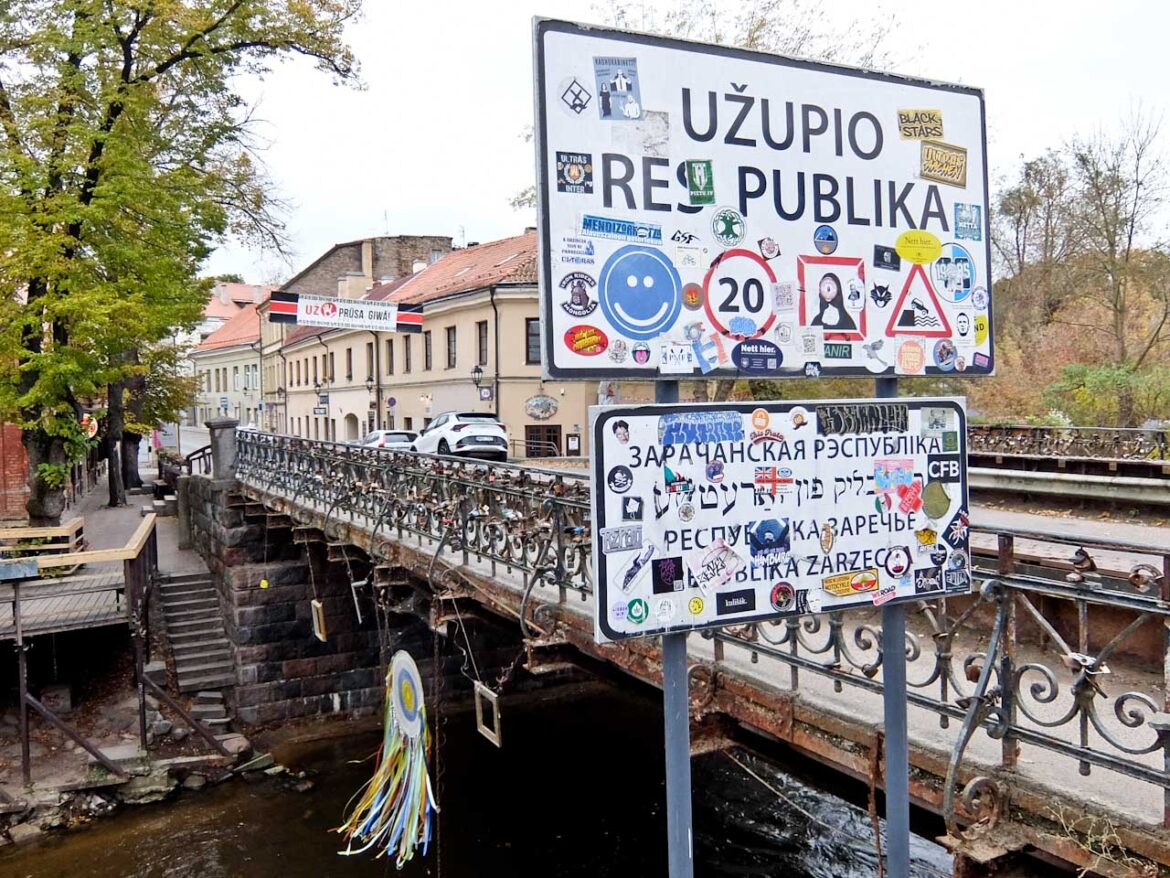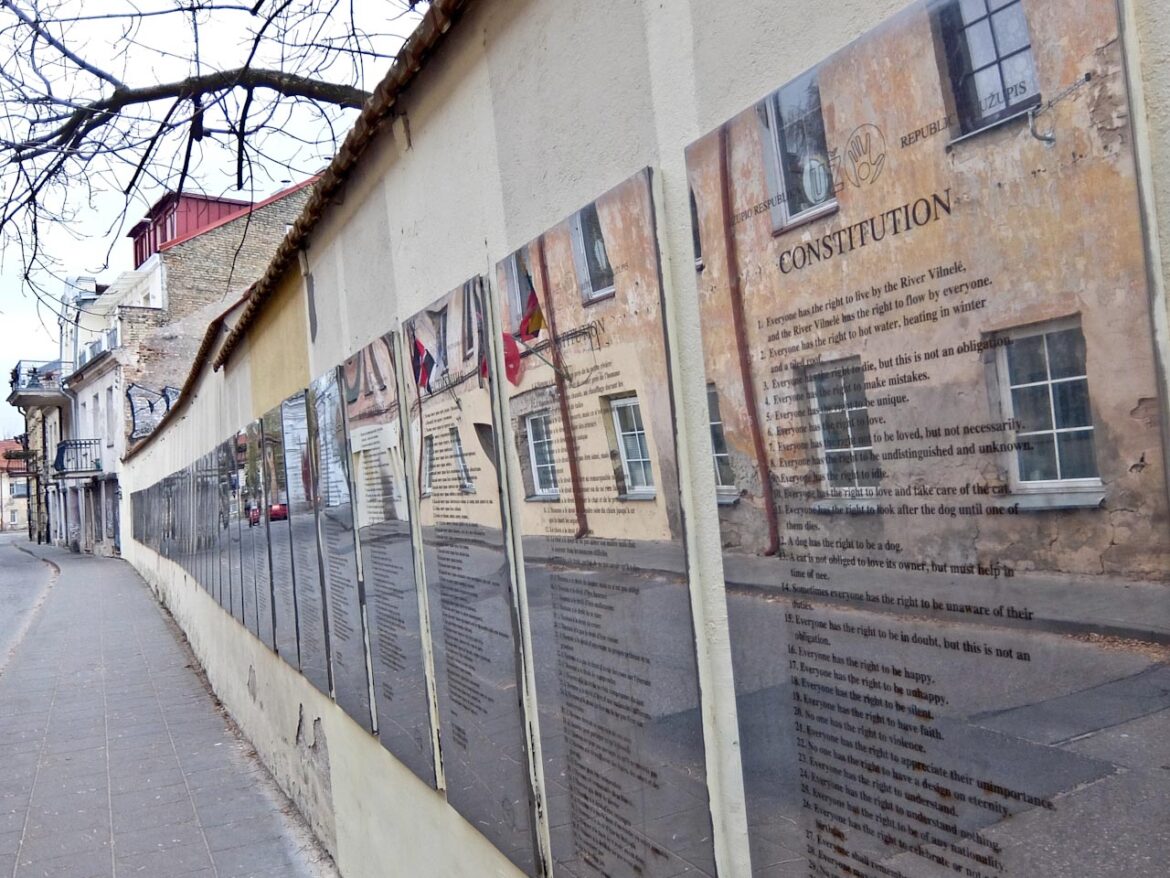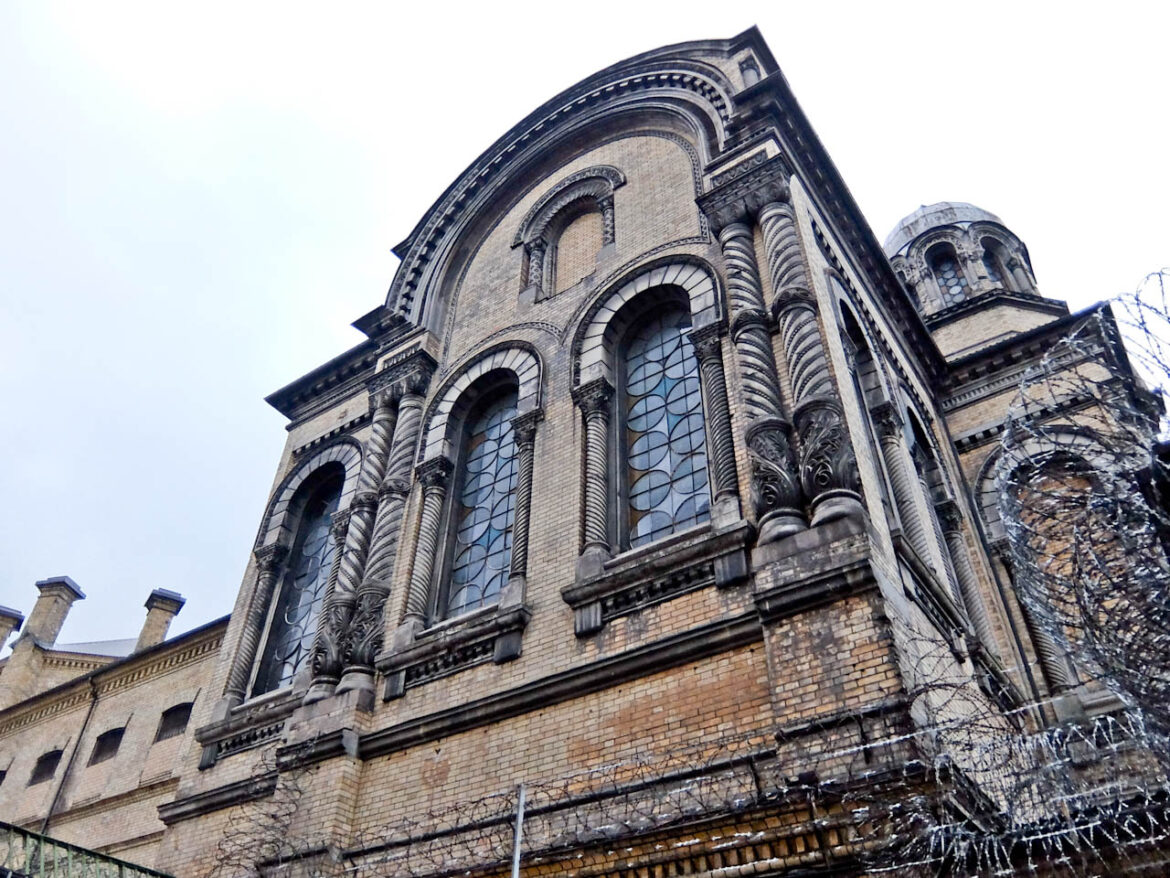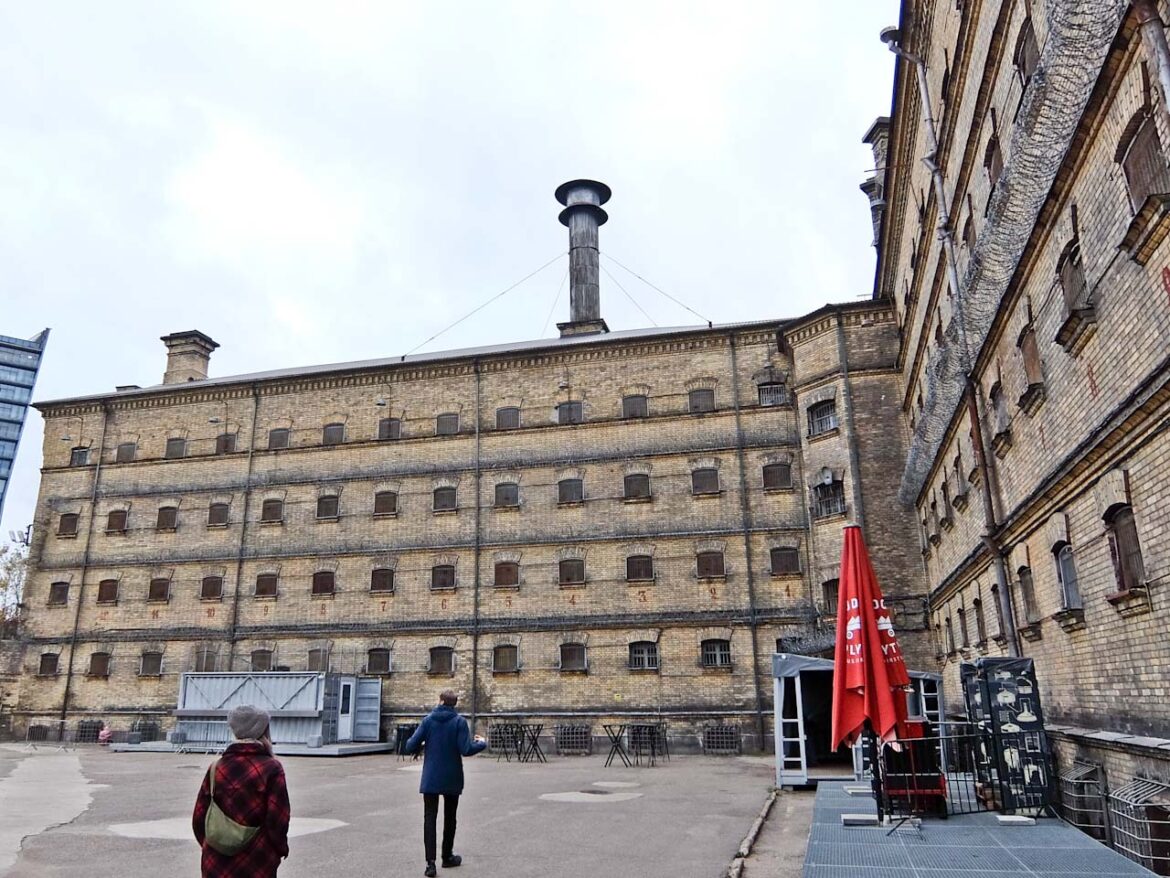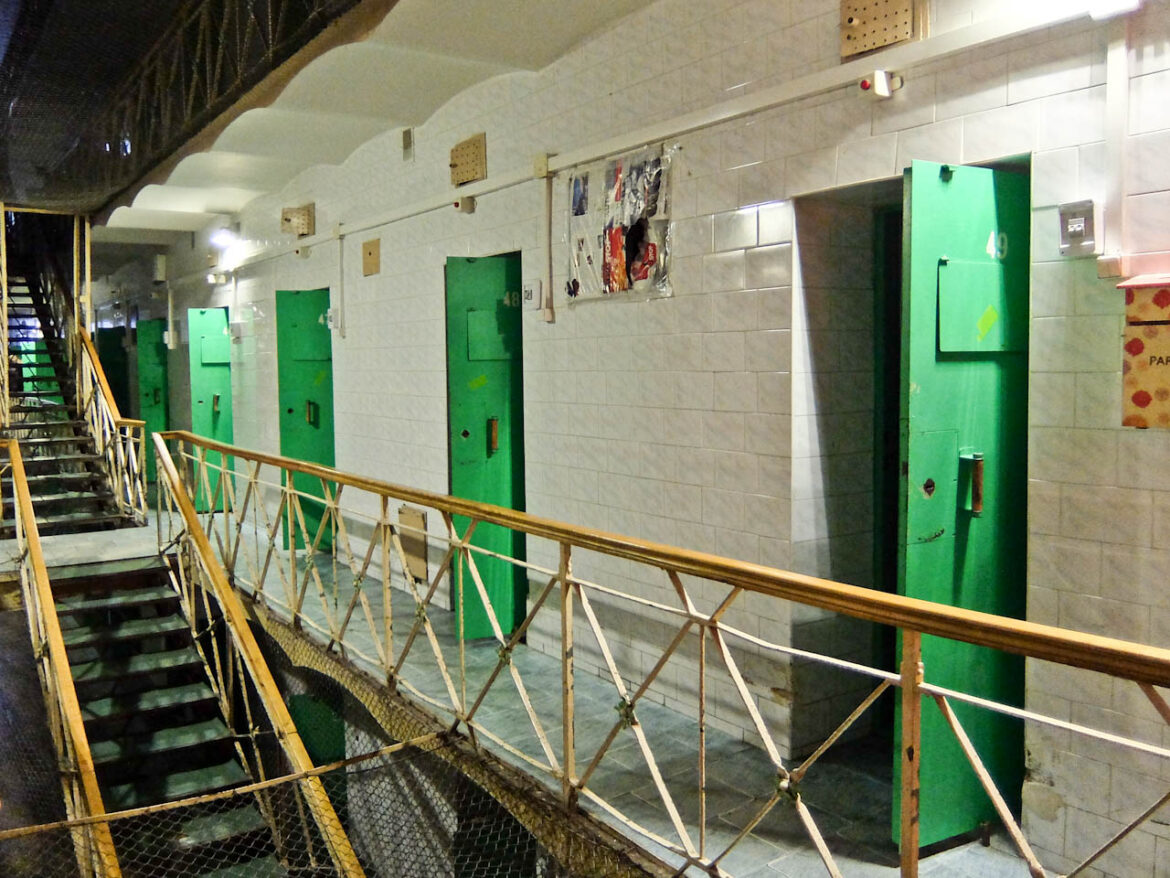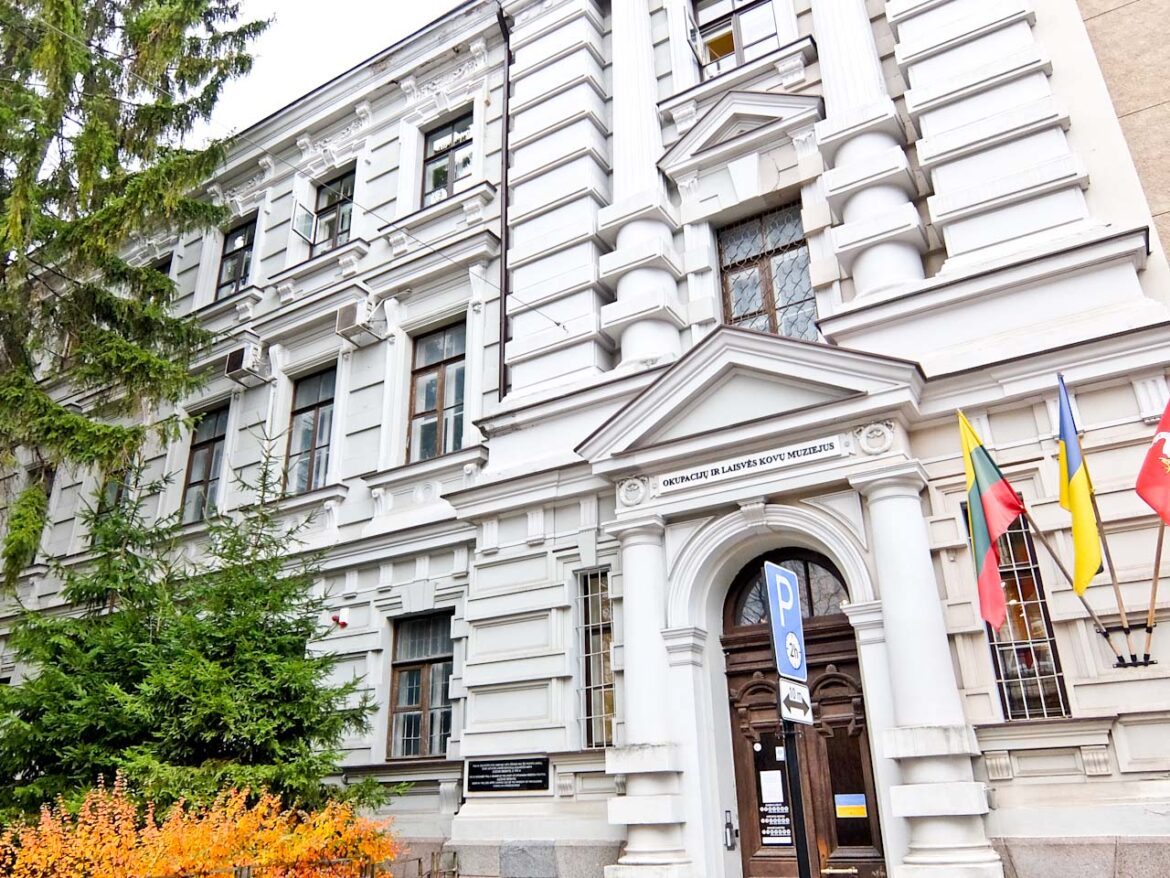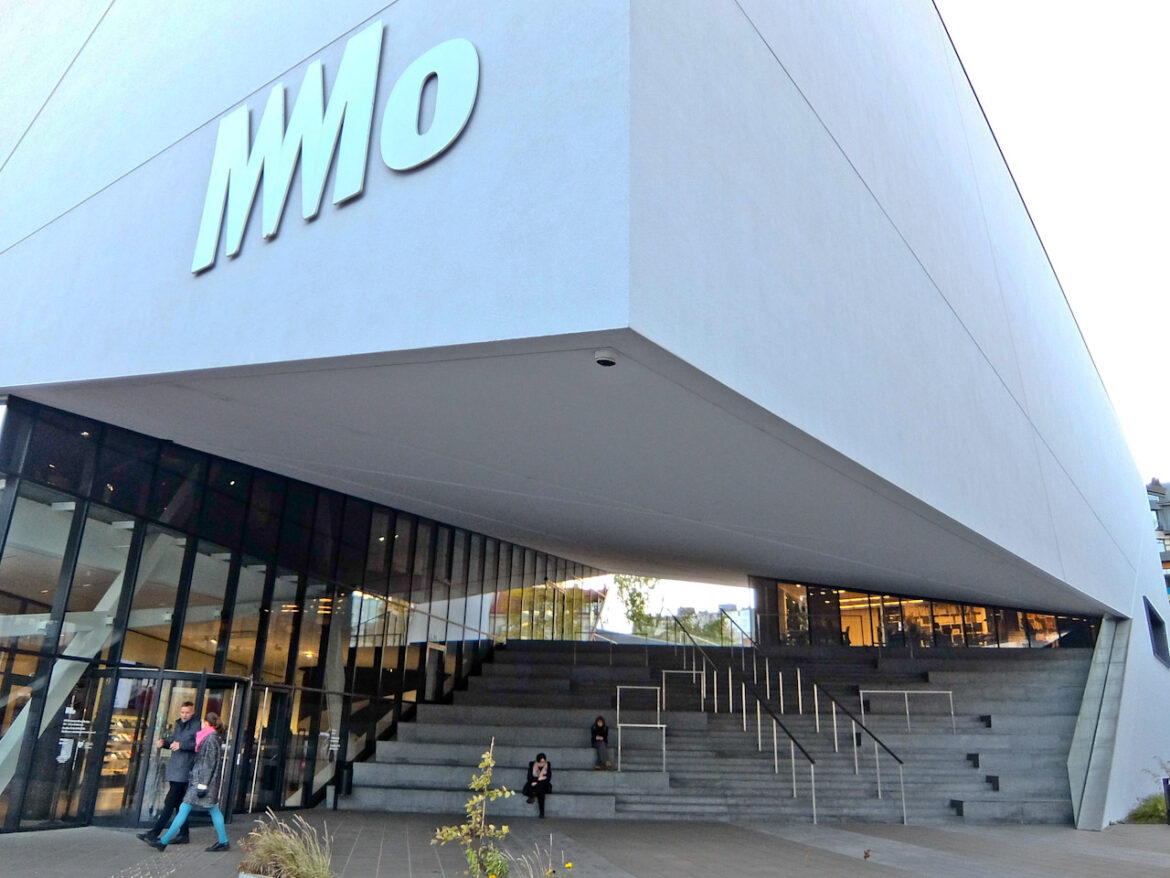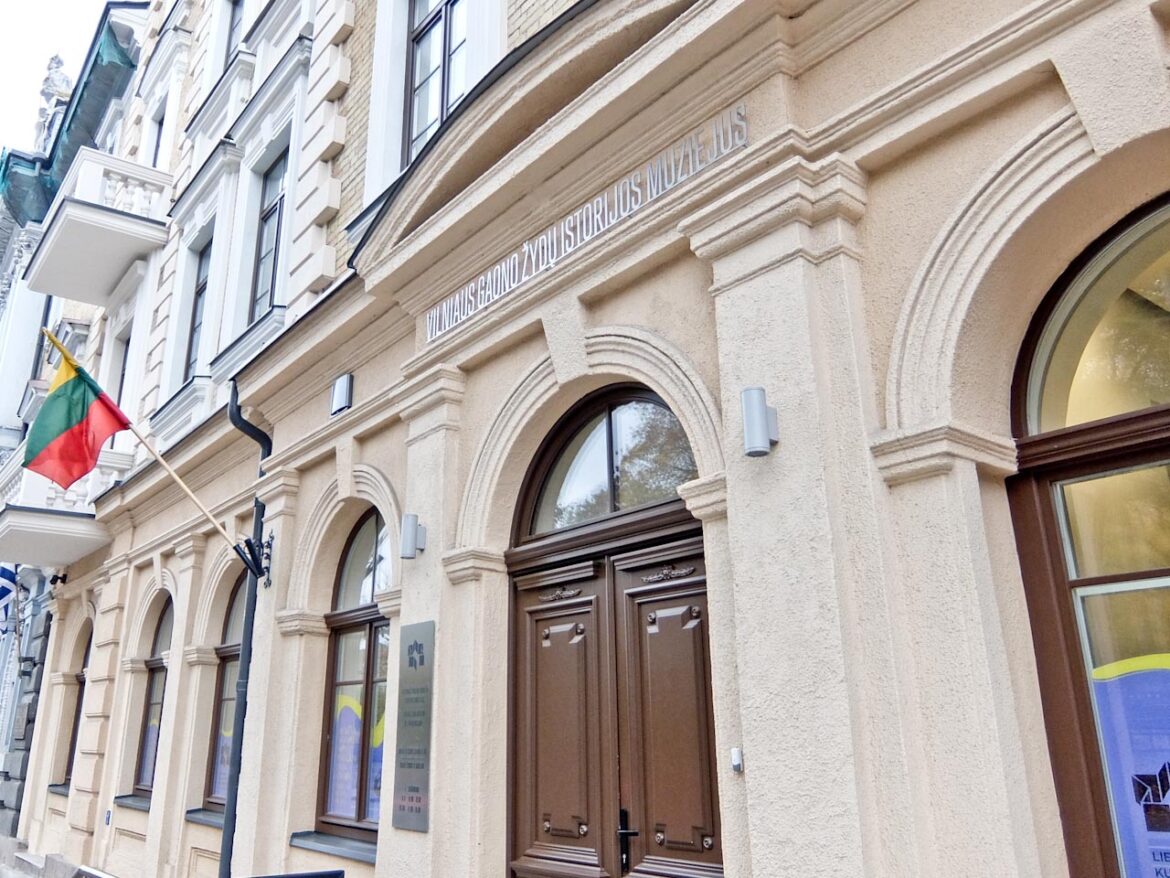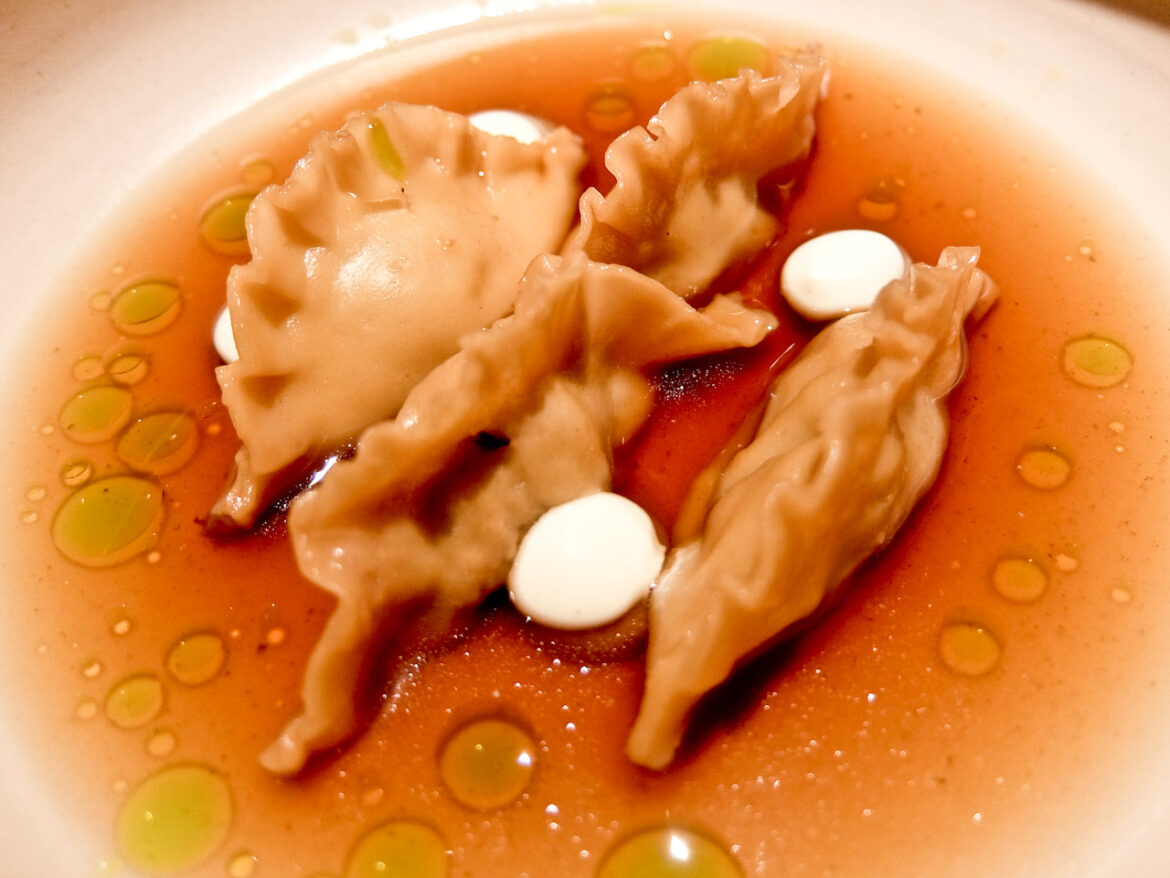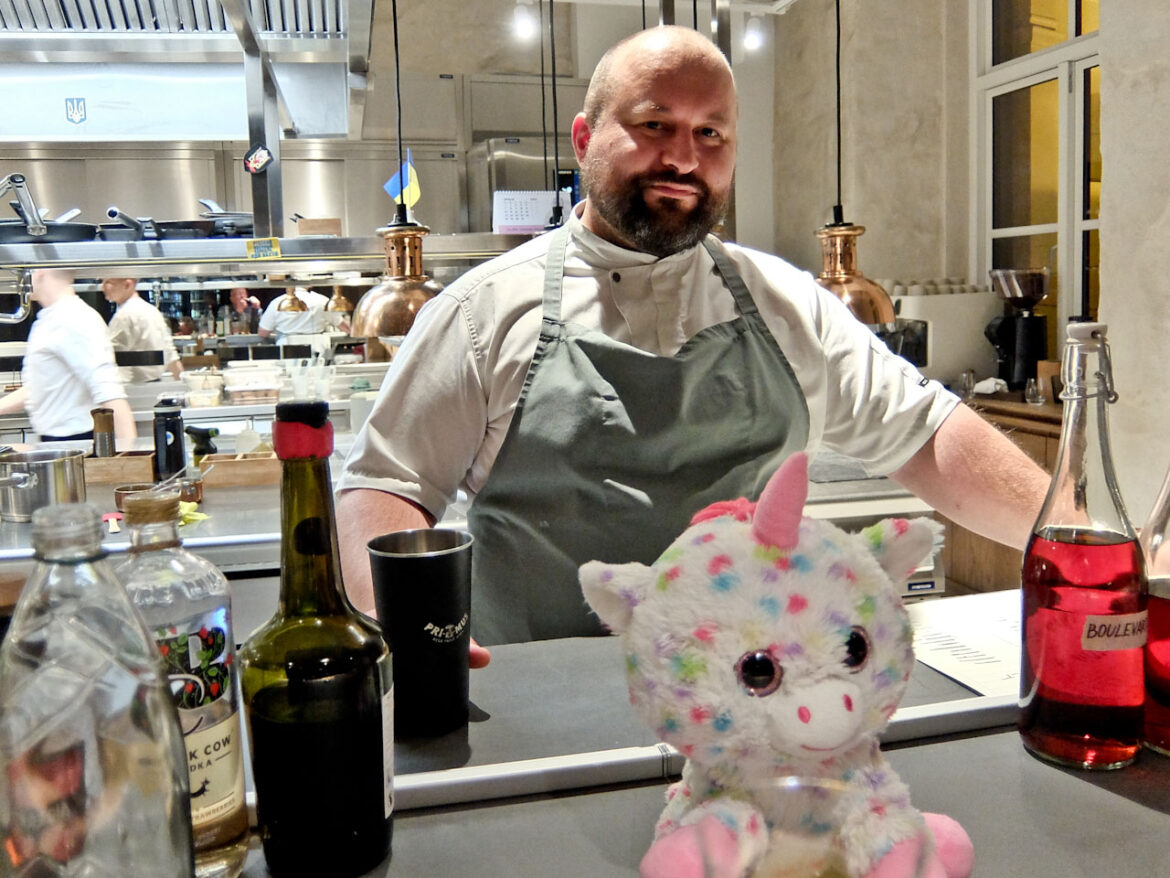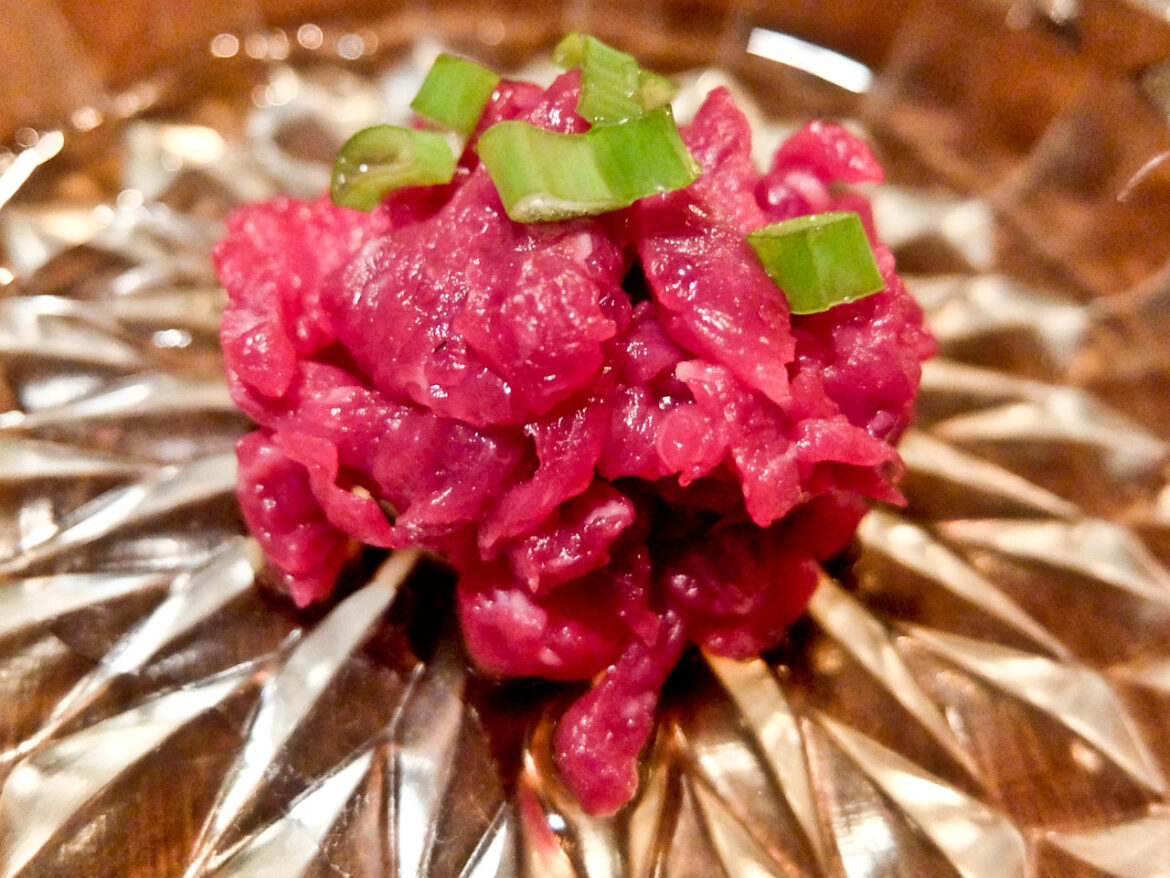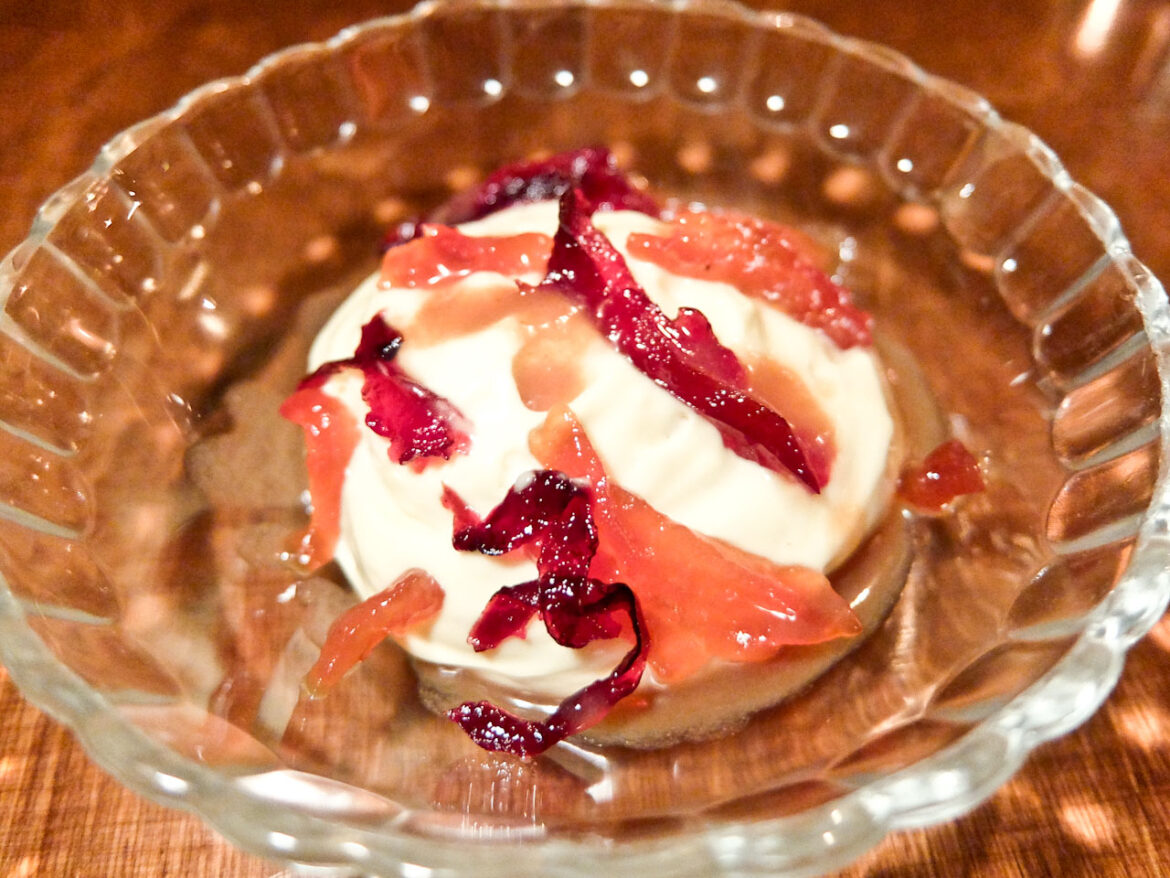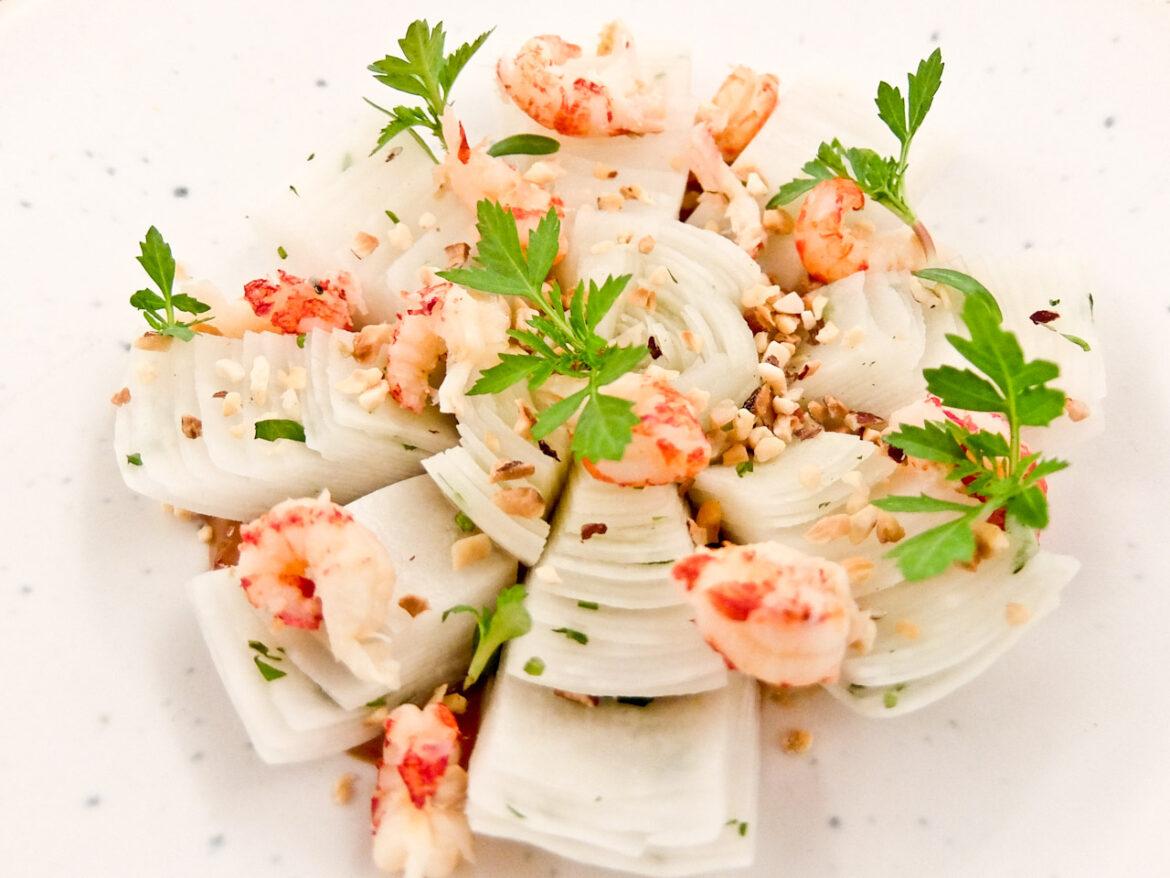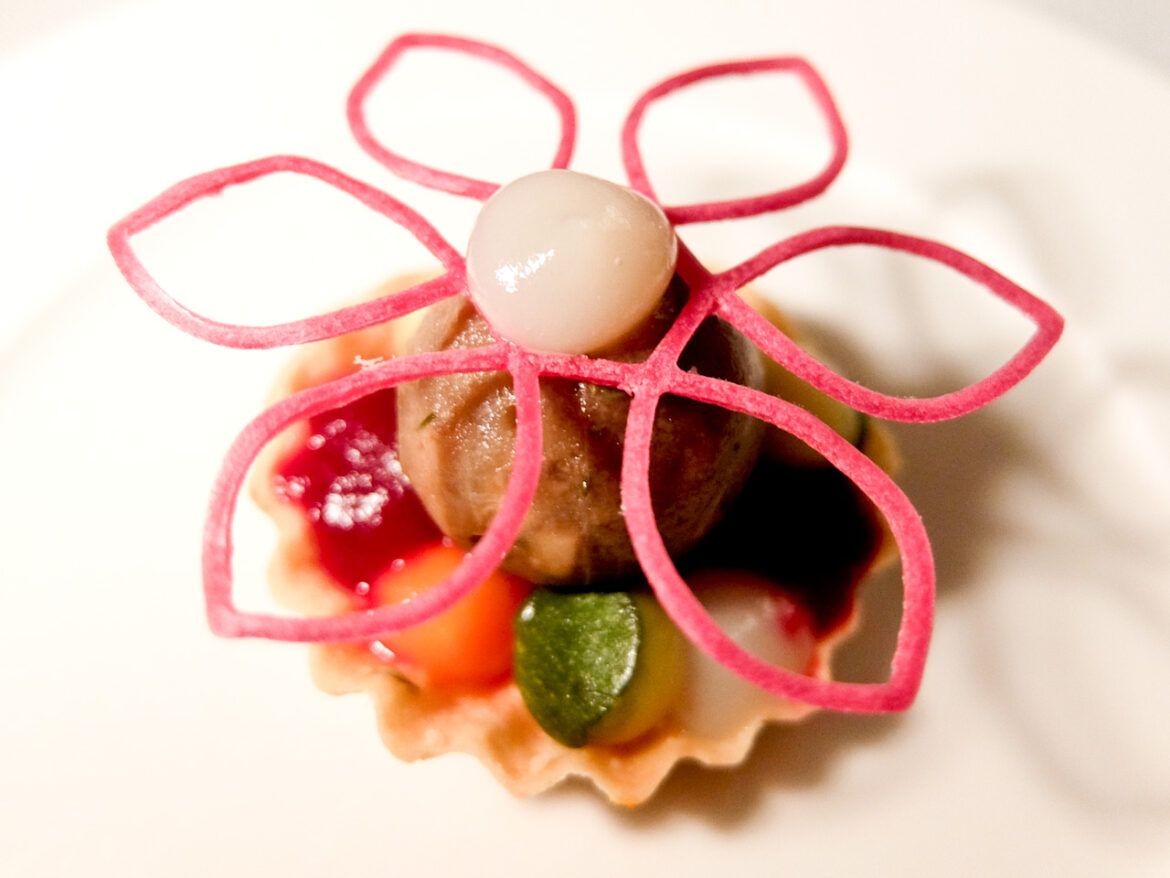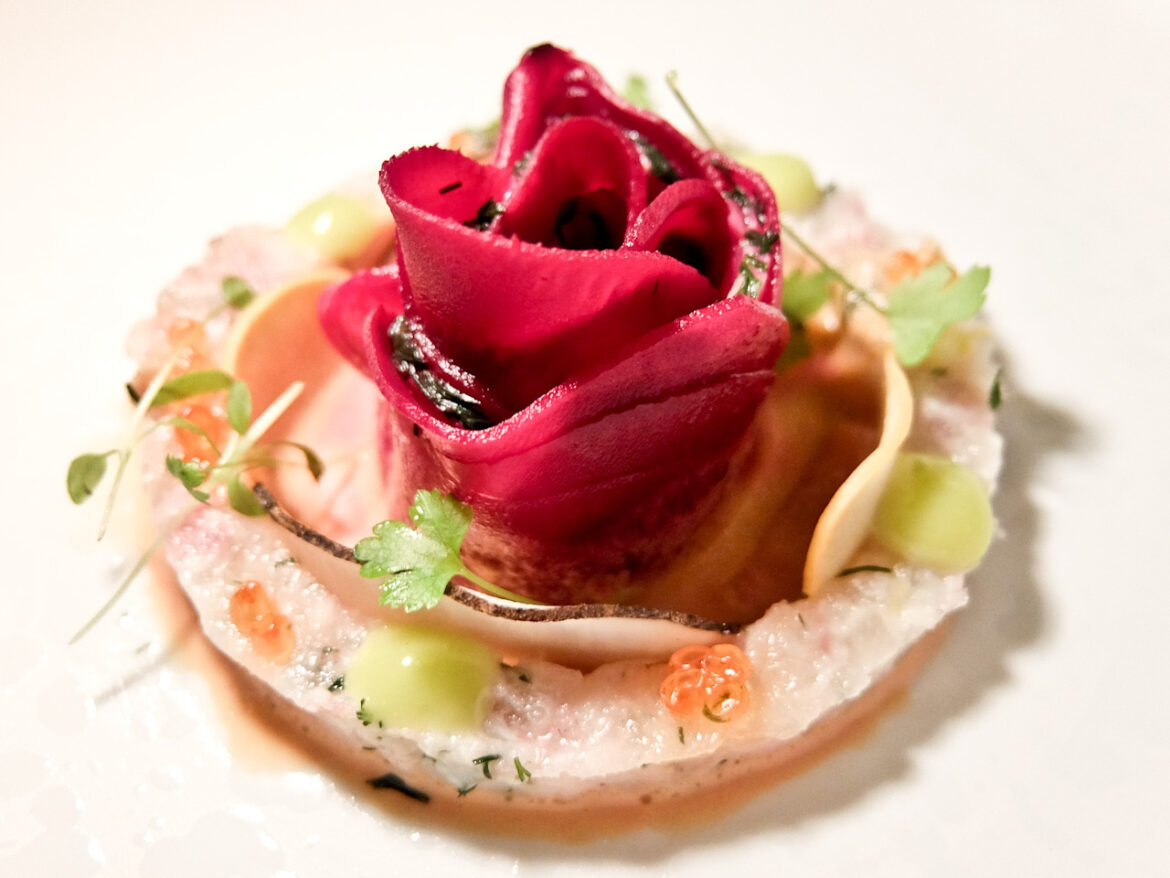In the heart of the Baltics, where Eastern European history intertwines with a modern vibe, Vilnius, the capital of Lithuania, offers an unexpected yet delightful travel experience. Its old town is justly celebrated, with its stunning Baroque architecture. Lining its cobble streets are many restaurants rooted in Lithuania’s rich culinary tradition. They also add a modern twist and the recent Michelin Guide awards their innovation.
City Tour
Vilnius boasts one of the largest and most well-preserved Baroque old towns in Europe, recognized by UNESCO. Yet, the architectural charm of Vilnius lies in its mix of Gothic, Renaissance, Baroque, and Neoclassical styles. Overlooking the city is the iconic Gediminas Castle Tower, a 14th-century fortress, which offers. panoramic views of the red-roofed Old Town.
Just below is Cathedral Square with Vilnius Cathedral and its Bell Tower The neoclassical façade hides a stunning interior featuring beautiful chapels, including the Baroque St. Casimir’s Chapel. Not far away is St. Anne’s Church, a gothic masterpiece rumoured to have impressed even Napoleon when he was marching towards Russia.
Outside the old town is Užupis, an artists, neighbourhood that declared itself an independent republic in 1997. It even had its own flag, president and constitution, which included articles like “Everyone has the right to be happy” and “Everyone has the right to be misunderstood.” These days it’s gone more upmarket but its streets are still a vibrant hub of galleries, street art, and cafés.
A grimier and grimmer side of Vilnius is Lukiškės Prison, guarded by high walls and barbed wire since 1905. It only closed in 2019 and this Neo-Gothic fortress is now open to the public. You can take a tour of the cells, preserved as they were left, but some of them have been repurposed for around 250 creators and artists. It hosts a wide variety of events, from concerts and art exhibitions to theatre performances and night tours.
Museums
Vilnius has a deep and complex history, and its museums offer travellers insight into the city’s past. The Museum of Occupations and Freedom Fights (also known as the KGB Museum) is a sobering reminder of Lithuania’s Soviet-era past. Located in a former KGB building, the museum reveals the struggles Lithuanians faced during the Soviet occupation, with exhibits dedicated to political prisoners, resistance fighters, and life under Soviet rule.
For a broader historical context, visit the National Museum of Lithuania, housed in thePalace of the Grand Dukes in Cathedral Square. It houses over 300,000 artefacts, including original Lithuanian, Polish, and Belarusian art, weaponry, jewellery, and other royal memorabilia. One of the most striking rooms is the Throne Hall, where the preserved throne sits beneath a high ceiling adorned with murals. Another highlight is the Treasury, displaying lavishly decorated crowns, jewelled sceptres, and ceremonial robes.
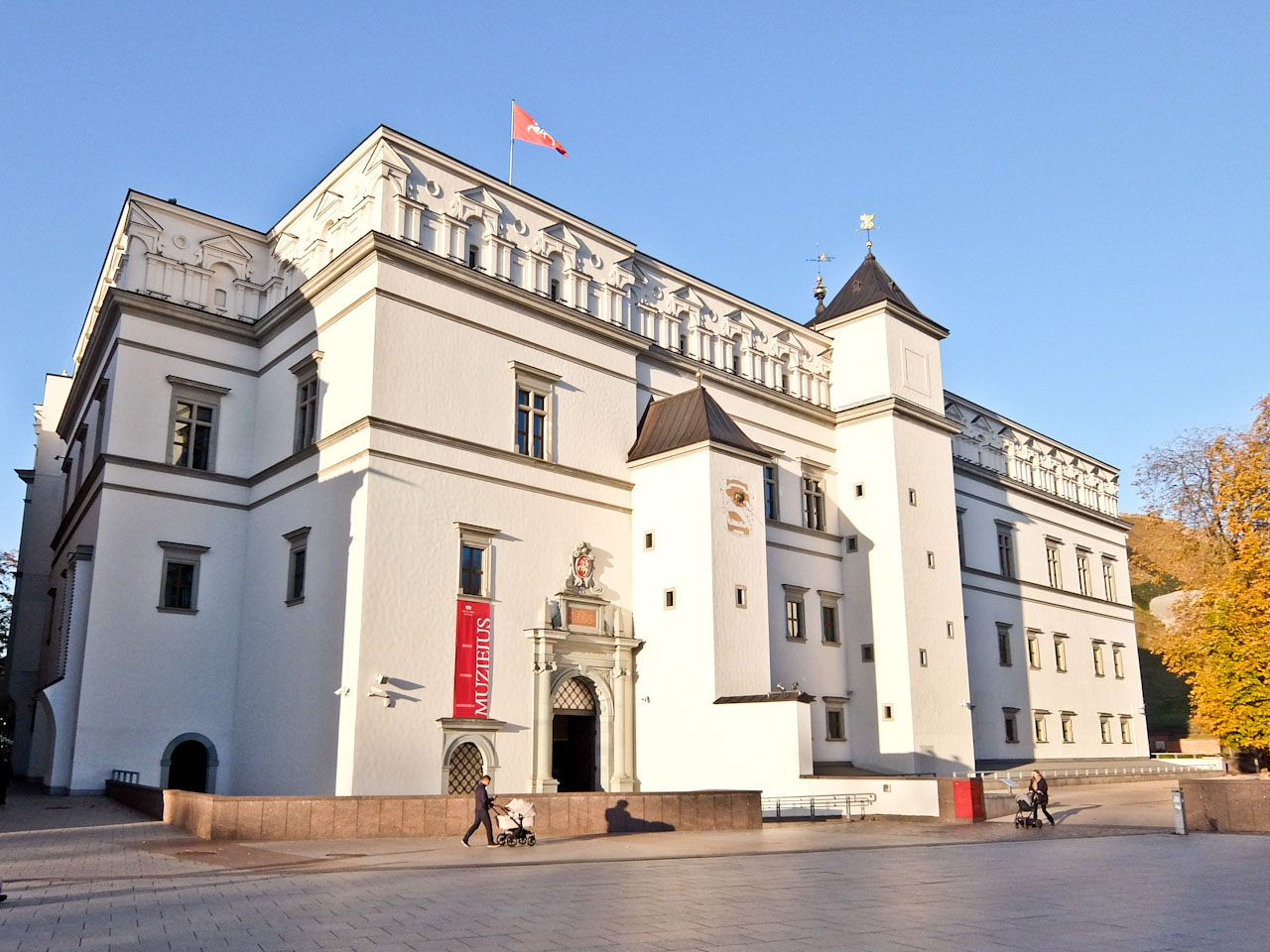
Grand Duke’s Palace
Bang up to date is the MO Museum, designed by world-renowned architect Daniel Libeskind, which has quickly become an iconic landmark since its opening in 2018. It boasts a carefully curated collection of Lithuanian art from the 1960s to the present day, featuring pieces that span painting, sculpture, photography, and multimedia installations. There are also temporary exhibitions that explore a wide range of themes, from the intersection of art and technology to reflections on human connection, ecology, and identity.
If you’re interested in the Jewish heritage of Vilnius, which was once known as the “Jerusalem of the North,” the Vilna Gaon Museum of Jewish History is essential for understanding the city’s Jewish community and cultural contributions. It’s the first museum in the country to present Lithuanian Jewish history, culture, customs and different scenes of everyday life in such a diverse and comprehensive way.
Sapieha Palace, in the outskirts, is one of the country’s most stunning examples of Baroque architecture. Constructed in the late 17th century, this palace, with its richly decorated facade and extensive gardens, stands as a testament to Lithuania’s artistic, political, and cultural history. In recent years, it’s been extensively restored after being used as a hospital by the Russians and now is a cultural and event space. A tour inside takes you through art and sound installations.
Restaurants
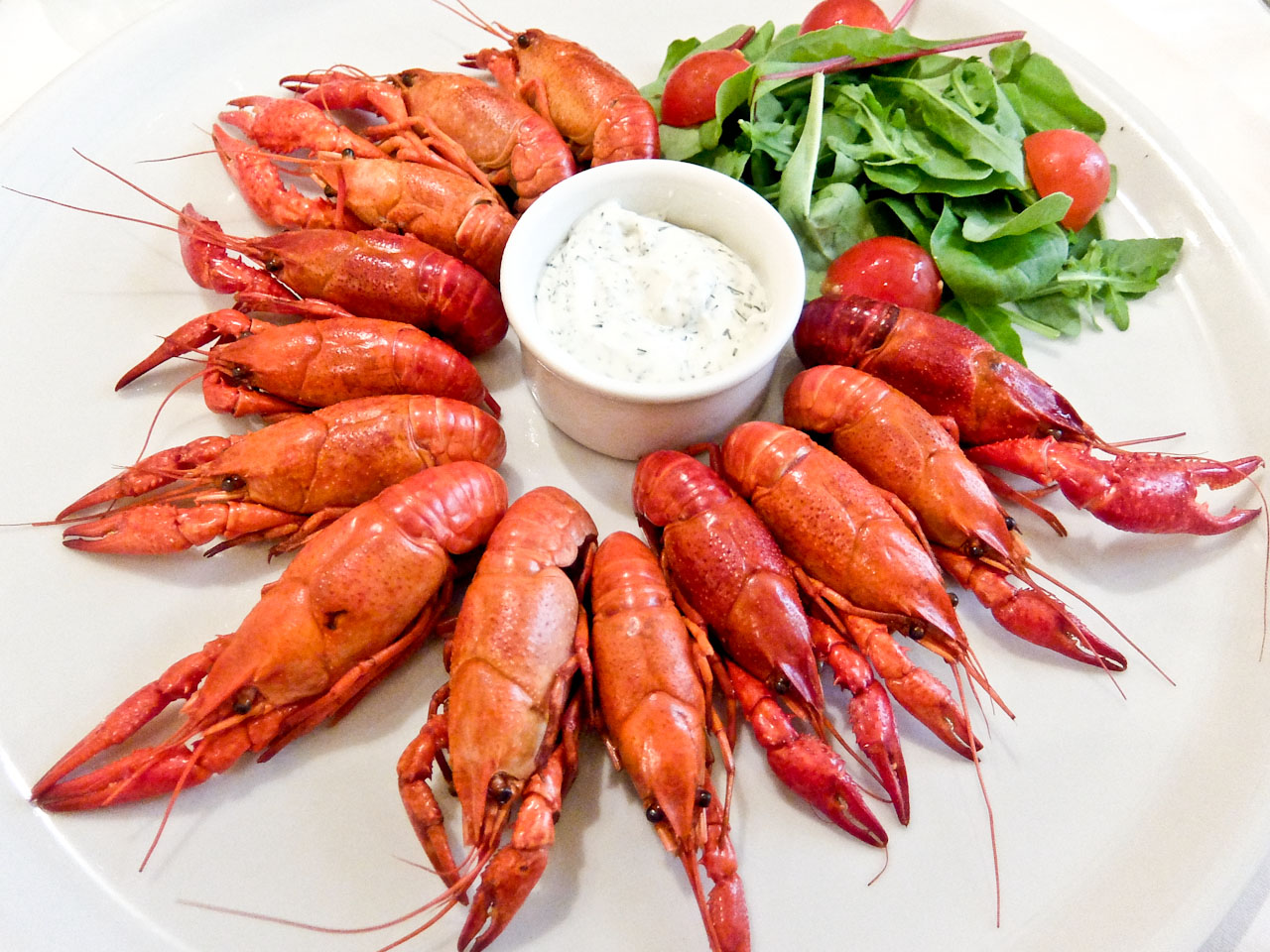
Lokys Crayfish
Restaurants in Vilnius are known for their dedication to farm-to-table principles, a focus on sustainability, and the use of organic, locally sourced ingredients, often foraged from the country’s abundant forests and fields. In total the Michelin Guide lists 34 restaurants including four with one star. What’s great is that all the following are in the old town and easily walkable.
Nineteen18 *
Named after the year Lithuania declared independence, this fine-dining restaurant embodies the spirit of Lithuania’s revival with a seasonal menu that changes daily. You are given a sealed menu – to open either now or later – which comprises a series of around 10 dishes that flow effortlessly into one another. The dumplings with mushrooms are a joy as is the beautifully cooked Danish beef with a wonderful chicken caramel. Sit at the kitchen counter so that you can interact with Chef Andrius Kubilius and his genial team.
Pas Mus *
The name loosely translates as ‘our place’ which sums up this place perfectly. A truly special spot run by a small team led by Chef-Owner Vita Bartininkaitė. Candles drip on the walls, you sit at fine wooden tables made by Vita’s partner, and the dishes have personality and purpose. The menu is a seasonal surprise – Vita regularly raids her mum’s garden for produce, as well as going foraging – and the innovative dishes blend together seamlessly, along with the characterful wines. The raspberry snow dessert with white chocolate ganache is definitely recommended
Augustin
This informal restaurant, with Chef Vytautas Samavičius, just outside the old town, has a sleek modern style. Punchy, colourful dishes blend Mediterranean and Middle Eastern flavours and are offered in two different formats. The majority of the menu comprises modern plant-led small plates – three per person plus a dessert is about right – but there are also three main courses on offer which are based around fish or meat.
Ertlio Namas
This family run restaurant serves up the culinary history of Lithuania dating back to the middle Ages in three floors of a historic townhouse. Chef Tomas Rimydis offers a 4 or 6 course set menu to experience interesting dishes from a bygone era – dating as far back as the 16th Century. They could include sorrel soup, salted and cured veal pekenfleišas or beef tart with beef broth sauce. Each dish comes with an explanation of its origins and history.
Factfile
GO: Direct flights from London with Ryanair from Stansted and easyJet from Gatwick.
INFO: Go Vilnius has information about the city.
STAY: The Artagonist Hotel is in the old town and is imaginative decorated with art.
EAT: Lokys serves traditional food including a variety of game including beaver.
Belaboste is a haven for Jewish or Litvak cuisine.
Source : https://www.thetravelmagazine.net/what-to-see-and-where-to-eat-in-vilnius-lithuania/

